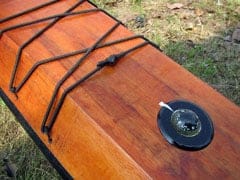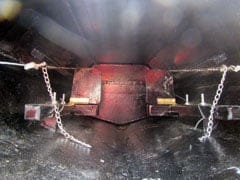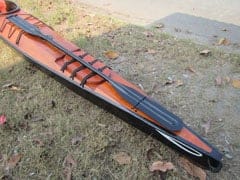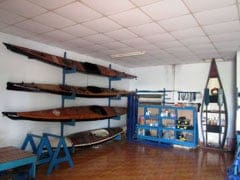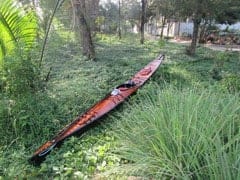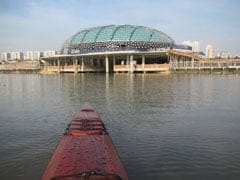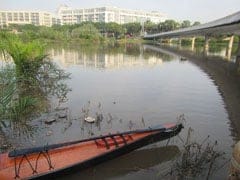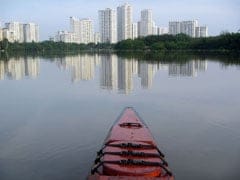Between the trials, I managed to complete a couple of things. First is to mount the compass, the tried – and – true type of compass used in all boats of the Serene series, this without an internal lighting. Then, I built another paddle, a simple one with rattan shaft, and plywood blades, a little bit bigger, weights at 1.1 kg, slightly heavier than the Greenland companion – my “storm paddle”, 0.9 kg. Still considered an Euro – type paddle, but with a smaller blade to resemble Greenland style.
As I sometimes need larger power faces to propel the boat under unfavorable conditions. The rudder control lines are modified to be more easily adjustable, see the second image below. The pedals are attached to small segment of chains, to adjust the tension, you simple move the shackle to another chains’ eye, this could be quickly done while you’re in the field. I also replaced the bungee cords holding the pedals back by 2 large steel springs, providing better “suspension”.
Just release one pedal and the springs would pull the rudder blade back to its neutral position. I added 4 tiny 3.7V LED bulbs (series wiring) to the electric box, in an attempt to indicate the batteries’ remaining capacity (as there’s no easy way to do so). This is a trick I learnt from experiences, when 1 or 2 of the LED bulbs won’t turn on, or their brightness is drastically reduced, you’d need to plug in the solar panel then! 😀 Not all works has been completed, but it’s time to clean up the workshop a bit!

